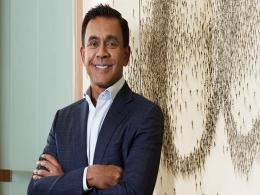Old Bridge Capital Management, the portfolio management services firm founded by former IDFC Asset Management Co. chief investment officer Kenneth Andrade, is floating a new public markets fund.
The firm is looking to raise Rs 100 crore ($14.5 million) through the new Long Term Equity Fund, an open-ended category III alternative investment fund (AIF).
Being a category-III AIF, the minimum investment amount per investor is Rs 1 crore. It is open to domestic and non-resident Indian investors as well as corporate bodies and portfolio investors across the world barring the US and Canada, as per regulatory norms.
“We already have portfolio management services (PMS) and finished raising capital for two closed-ended AIFs last year. We needed a new product on the shelf,” said Andrade, Old Bridge’s founder and chief investment officer.
The sector-agnostic fund will invest in fast-growing companies in line with the firm’s anticipation of India’s economic growth. It may invest in about 20 companies.
The firm plans to build its portfolio around mid- and small-cap companies. It may invest in industrial companies, comprising capital goods and infrastructure engineering, procurement and construction companies. Besides, it will invest in companies operating in the farm sector as well as automation, said Andrade.
The fund is aiming to outperform the broader market by about 3-5% over the three-year period, Andrade said.
Both mid- and small-cap indices on the BSE have yielded about 35-36% in returns in the last three years, stock-exchange data showed.
“There will not be any capital gains tax liability for the investors given the nature of the fund. The fund will deduct all statutory levies and charges at the time of redemption,” he said.
Andrade is hopeful that economic growth will pick up pace through reforms, spending and new policies after India chose a stable government from the recently concluded national elections.
Incumbent Prime Minister Narendra Modi made history last week, becoming the first non-Congress leader in independent India to win two back-to-back Lok Sabha elections with a clear majority.
Modi’s Bharatiya Janata Party-led National Democratic Alliance (NDA) coalition won a near two-thirds majority in the 543-member Lok Sabha. The BJP on its own won 303 seats in the lower house, 21 more than it had won five years ago.
“We expect a lot of government spending around infrastructure and farm-based economy. This may revive capacity utilisation and private capital expenditure, leading to job creation. The government needs to put jobs ahead of income to boost real growth and consumption,” said Andrade, adding that consumption pattern moderated a bit in the recent past but it won’t fall off the cliff.
Five years ago, Modi had promised to create 100 million new jobs if voted to power. However, India's unemployment rate in April 2019 rose to 7.6%, the highest since October 2016. Unemployment rate was at 6.71% in March, according to data compiled by the Centre for Monitoring Indian Economy (CMIE).
Andrade left IDFC AMC in 2015 to set up Old Bridge, which was founded in 2016. In late 2017, Old Bridge floated the Vantage Equity Fund, also a category-III AIF. Through the fund, it raised upward of Rs 1,000 crore as against its original plan to raise up to Rs 400 crore.
Andrade, who manages about $250-300 million in assets with Old Bridge, has more than 25 years of investing and research experience in India’s capital markets. He spent 10 years (2005-2015) at IDFC MF and managed $8 billion in assets as the firm’s CIO.
Category III AIFs include hedge funds and public market-focussed PIPE funds, or those that make private investments in public equities.
SEBI had introduced its AIF regulations in 2012 to supervise the unregulated fund market in India comprising private equity funds, real estate funds and hedge funds, besides encouraging new capital formation and protecting investors. Since then, more than 575 AIFs have registered with SEBI since then.
Under the regulations, apart from Category-III, there are Category-II funds comprising private equity funds and debt funds while Category-I AIFs include venture capital funds, infrastructure funds and social venture funds.
AIF boom
Affluent investors in India have long been keen on exploring alternative investment options to diversify their portfolio, giving rise to an increase in AIFs, according to industry observers.
In February, VCCircle reported that a US-headquartered investment advisory and management firm was looking to float a Category-III AIF focussed on India’s public markets.
Another firm, iRage Master Trust Investment Managers LLP, had floated its maiden AIF that uses advanced quantitative, or quant, analysis techniques and long-short strategies between Nifty Futures and its constituent stock futures to preserve capital in volatile market conditions.
In February 2018, panellists at the VCCircle India Limited Partners Summit had forecast that the size of the alternative investment fund industry in the country was likely to more than double over the next two to three years, thanks in part to favourable policies by the government and regulators.







